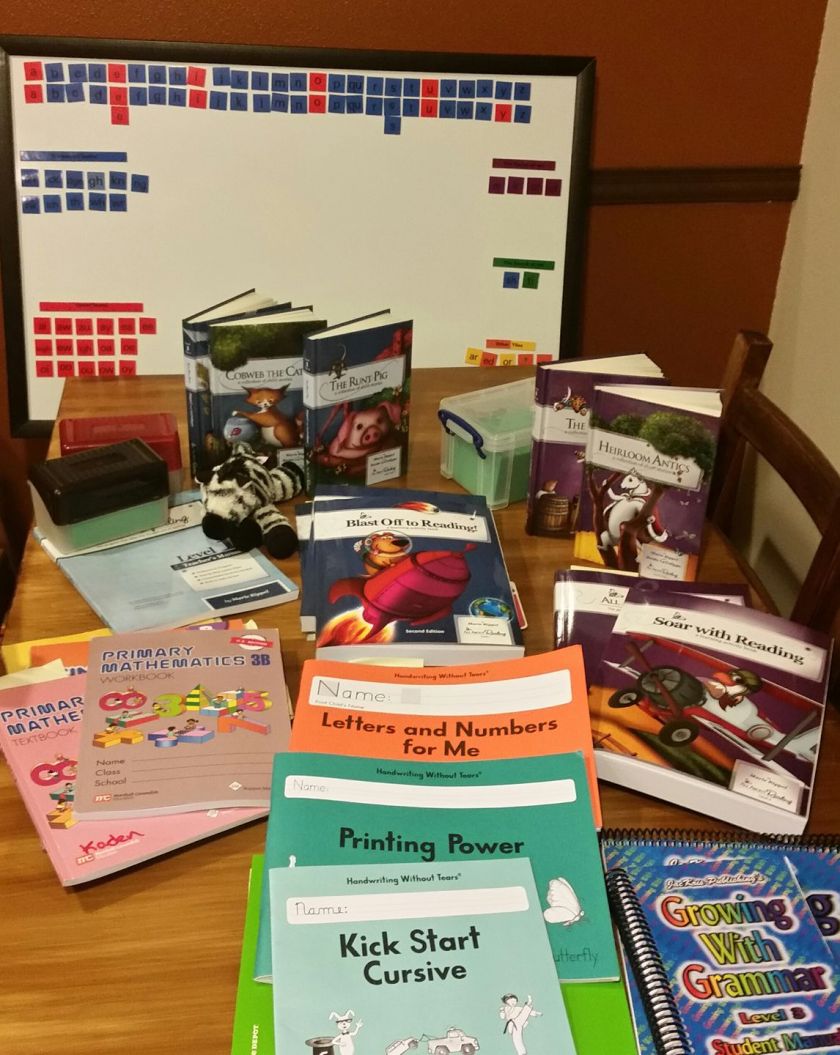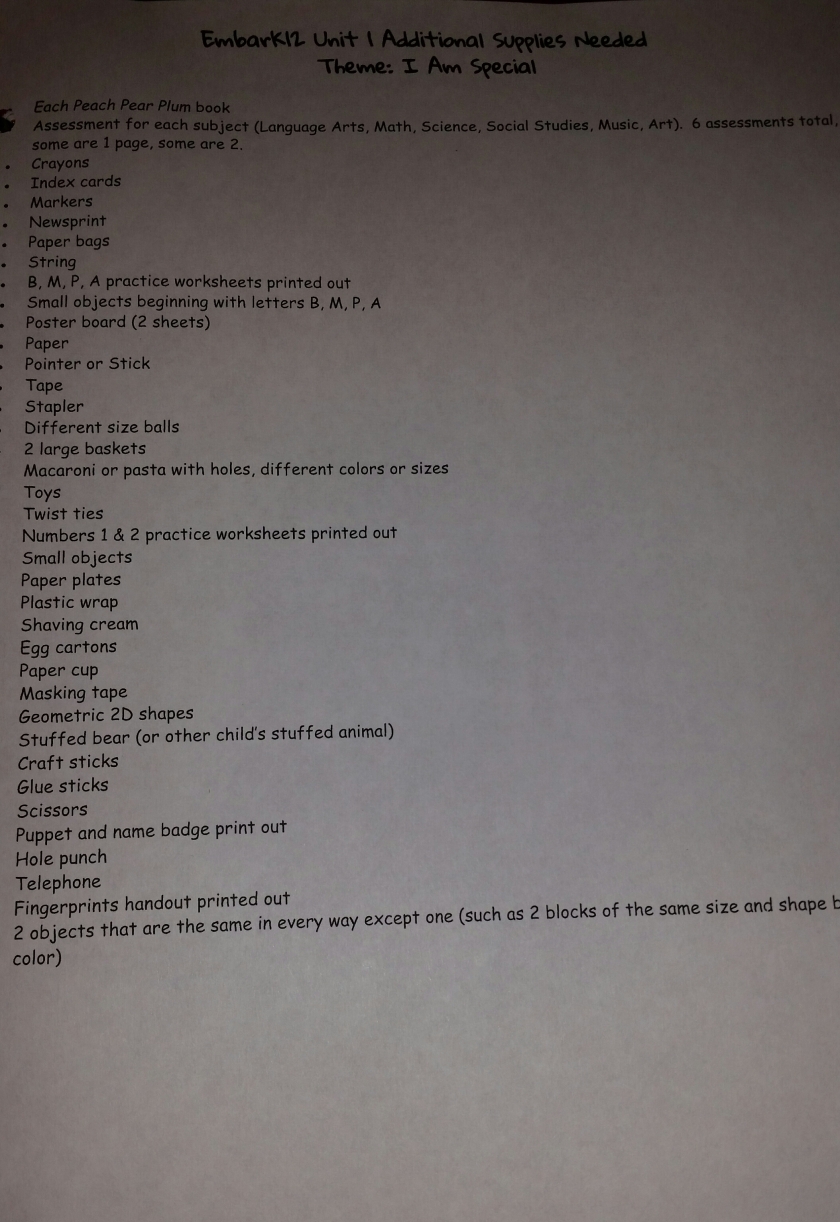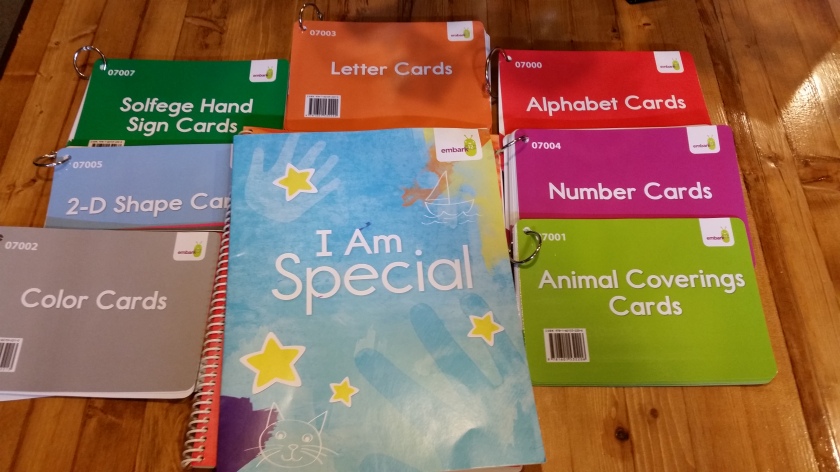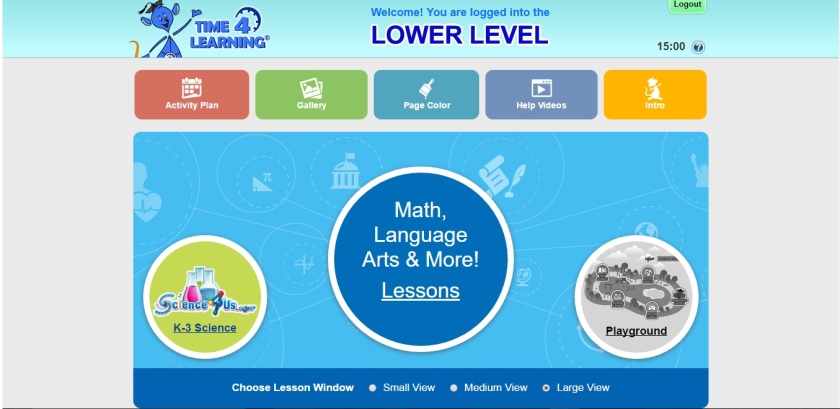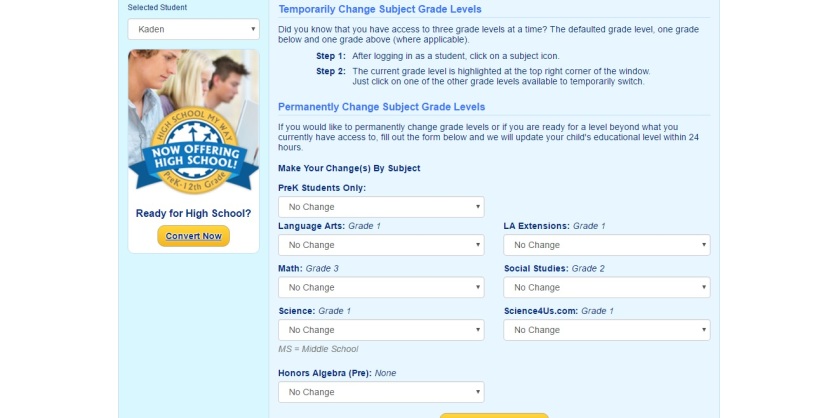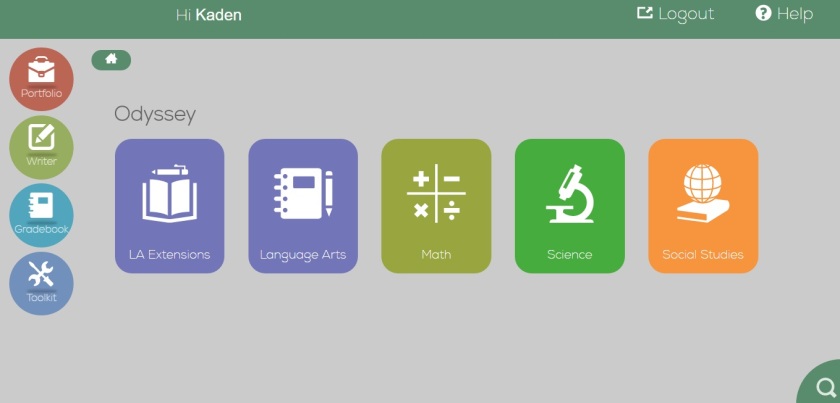During the school year, I spend a lot of time supplementing what my two children are doing in their classrooms. But during the summer, we get to live the full homeschool experience. This summer, they both did one week of Vacation Bible School, one week of summer camp, swim lessons, and my older child, K, is taking a reading class through the Institute of Reading Development (sponsored by Oregon State University here in Oregon). But I think to really combat the dreaded “summer slide,” and even to make gains, you have to be intentional about learning every single day.
So I thought it might be helpful to share what our schedule has been this summer. My daughter will be entering her second year of preschool this fall and my son will be entering 1st grade.
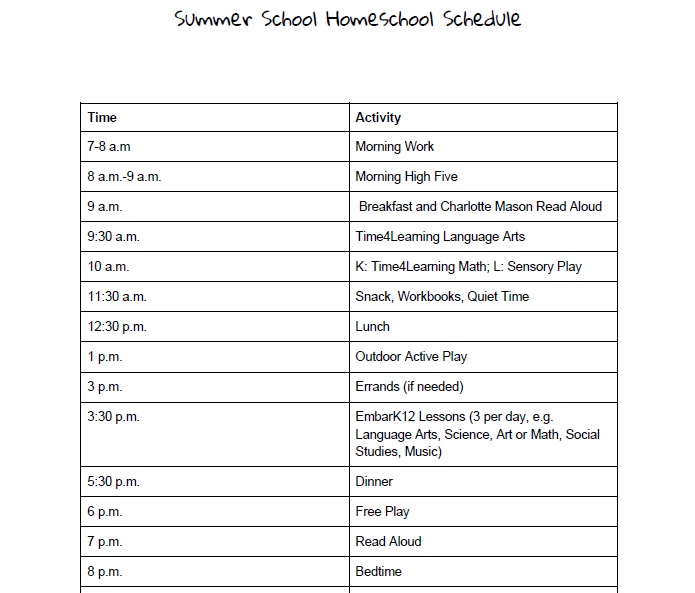
I’ll walk you through each piece, and you can also download the document for yourself at the end of this post. We are using Time4Learning for my son, K, for his summer lessons. I will be writing some posts reviewing pieces of that program in more detail soon, but if you want to read a bit more about it right now you can check out this post. We started using EmbarK12 Comprehensive for my daughter, L, about a month ago (so mid-summer for us).
Here goes!
Since it is summer, the time the kids wake up varies more than it normally would. Generally, they wake up sometime between 7 a.m. and 8 a.m. My older child usually wakes up closer to 7 and my younger one closer to 8! Anyway, the rule in our house is, before they can get up and about (and interrupt mommy’s tea time!), they must complete their morning work. My preschooler has letters to practice writing, usually about 5 (we create a word for her to practice letter by letter. Some recent examples are “puzzle,” “glitzy,” “smart,” “funny,” “fancy”). My school-ager has math problems to complete, about 6 problems (some are based on whatever skills we have been working on and the others are review problems, to keep the skills in practice).
Next, they have to work on their “Morning High Five.” This is a set of 5 tasks each of them complete every morning, and we have a laminated sheet hanging on the refrigerator that lists them for both kids, which they can check off daily with a dry erase marker. The tasks are 1) make bed 2) brush teeth 3) go potty 4) bring clothes for the day downstairs 5) get dressed. My kids really like to eat breakfast in their PJs, which is why #4 exists. Yours of course can be different.
During their breakfast time I will read aloud to them a book from our Charlotte Mason list. Generally I pick a book that is more dense, with more intricate language, and with no pictures. I find they pay more attention to these types of books during mealtime, and I save the simpler books and/or books with pictures for our evening reading time. A couple examples of our breakfast books this summer are the Wizard of Oz (I got this free on the Kindle!) and 5 Little Peppers and How They Grew.
After breakfast we do our first Time4Learning lesson. We begin with Language Arts. We selected 1st grade Language Arts for K for the summer, because when we did a couple of placement tests with him in the spring (just random ones I had found online), he was placing into 2nd grade Language Arts. I was worried if we just went for 2nd grade, we might encounter unforeseen gaps in learning, so we decided to do the 1st grade lessons over the summer. They have been mostly review, but I think it was the right choice. On Time4Learning, the vast majority of 1st grade Language Arts is phonics work, which my younger daughter, L, excels at. So she sits and does the Language Arts with her older brother.
Next my son works on his Time4Learning math lessons. He is working on 3rd grade math, which is far above my daughter’s level at this point. So, while he is working on his math L has quiet free play. She has a variety of activities to choose from, but almost always goes for the play doh.
After this they have a snack, and then spend a few minutes putting pencil to paper using their workbooks. L has a variety of preschool skill workbooks I have found at the local dollar store, and K is working on a 1st grade Grammar workbook I found for free online. After they each complete 2-3 pages, we have “Quiet Time.” Quiet time is also known as my sanity time. It is usually 15-30 minutes (when we have time at all), when I sit, breathe, and have some tea. The kids spend this time doing quiet play in their rooms. Usually they read, build with legos, or even lay down if they are tired.
After we are recharged, we set our sights on a fun afternoon. We eat lunch, and then head out for a couple of hours. Think of this time like a very extended recess. Some of our favorite things to do are ride bikes, head to the park, play in the kiddie pool, draw with sidewalk chalk, and blow bubbles. After this time is when we run any errands I have to get finished.
Once we’re back home, we start on L’s preschool lessons. We usually do 3 lessons each day, as you can see in the schedule above. K almost always joins in and does the activities with us, which makes the games and projects much more fun. There are always hands on projects and activities with L’s EmbarK12 lessons, so there can be quite a bit to gather in advance. You can see I spend some time at the end of the day, after bedtime, getting together everything we will need for the next day’s lessons.
After L’s EmbarK12 time, the kids have free play before dinner if time permits (not in the schedule because time doesn’t often permit), and then we eat dinner. Finally, they get a big chunk of free play time before our evening reading time.
We call our evening reading time “Special Time.” This is when we take turns reading. K, who is entering 1st grade, has just recently begun reading his own chapter books. We are on book 2 of the Dragon Masters series (he just finished book 1). So, he usually reads aloud 1 chapter to us each evening. If it is a long chapter, we will break it up and he will read half. L, my preschooler, is working on sounding out words, so she is slowly making her way through the first set of BOB books. She will read 1 BOB book aloud to us during Special Time. This is also the time when I read aloud books other than our breakfast book. We are almost always reading a Magic Treehouse book. We are about to begin book 28. These are great books to read aloud. My kids love them. They are easy to follow, with a pretty formulaic plot (the kids love this, though for the grown up it can get a bit tiresome!), each with 10 short chapters. And pictures every 3-5 pages to hold their interest. We sometimes have a second chapter book going as well. For example, we are working on getting through Charlotte’s Web as well which I read at this time. Otherwise, I will read a picture storybook or two of their choice during this time.
Finally, it is bedtime! Then, back at it again tomorrow. I do want to point out that flexibility is key. Sometimes we get much less done, sometimes more. Sometimes we have a class or camp or play date that interferes with the schedule, and we just try to get back on track the next day. Having a schedule to stick to is very helpful to staying on track, but it shouldn’t take all the fun out of summer.
If you would like to use this schedule to help you plan, here is the document. SummerSchoolHomeschoolSchedule
